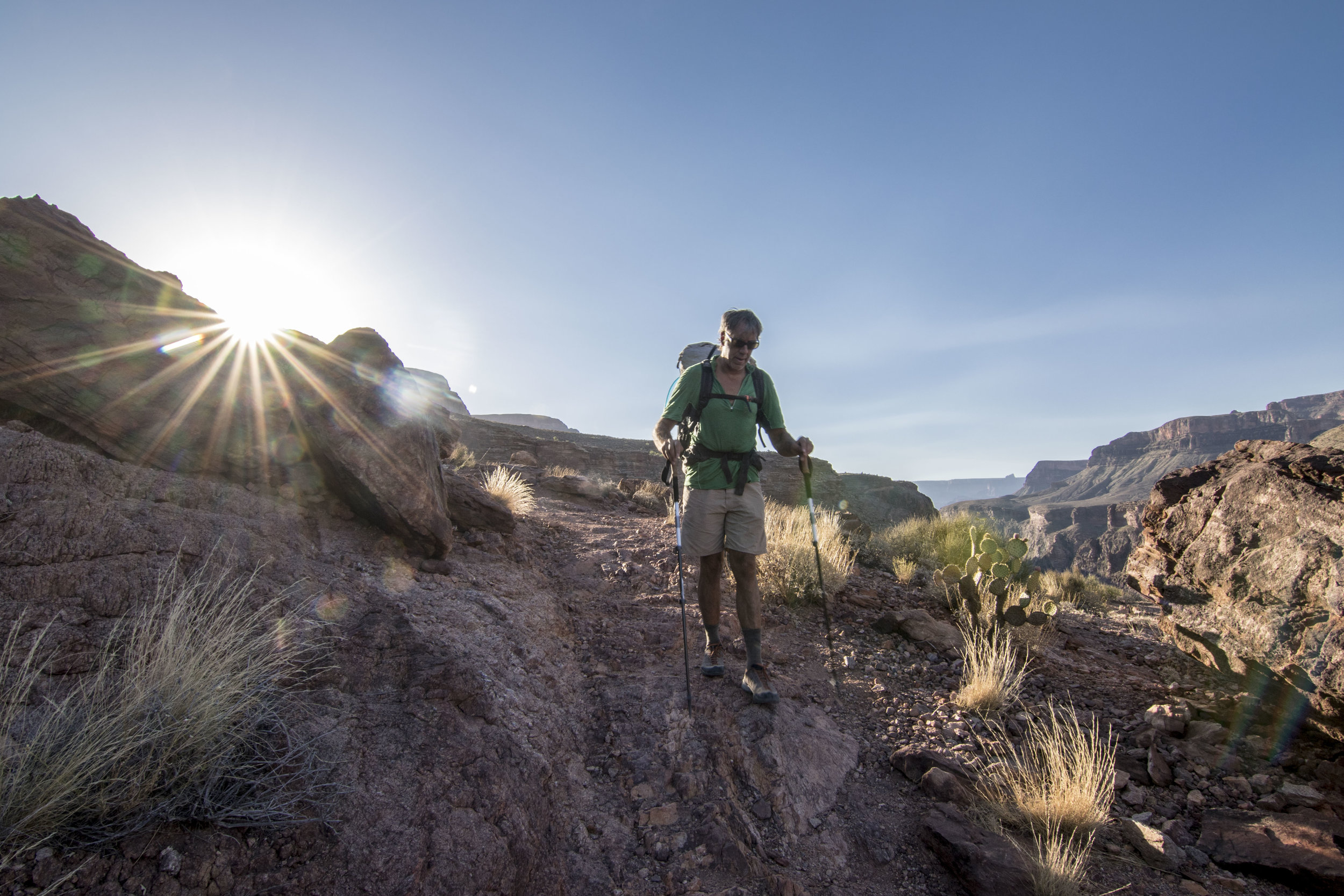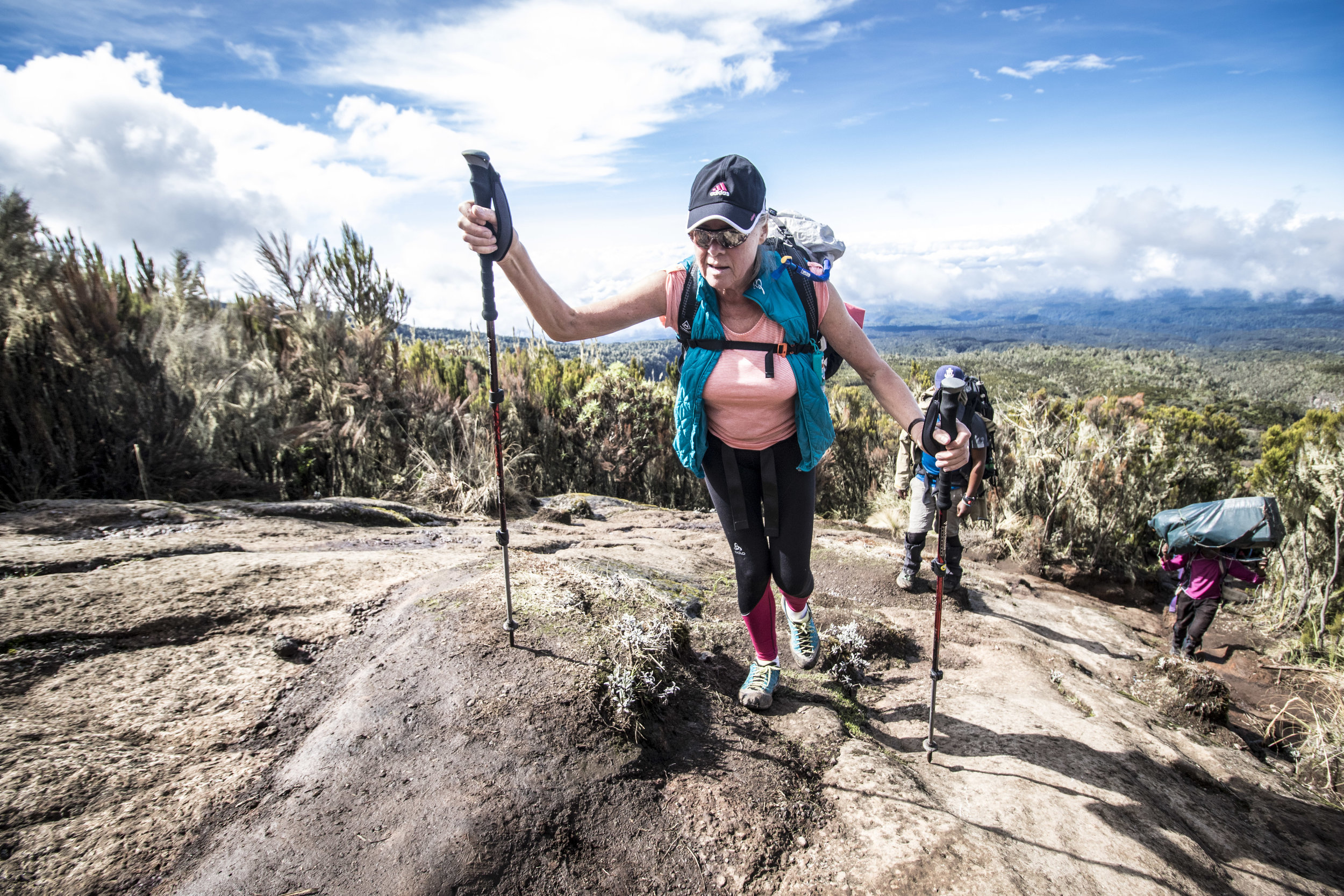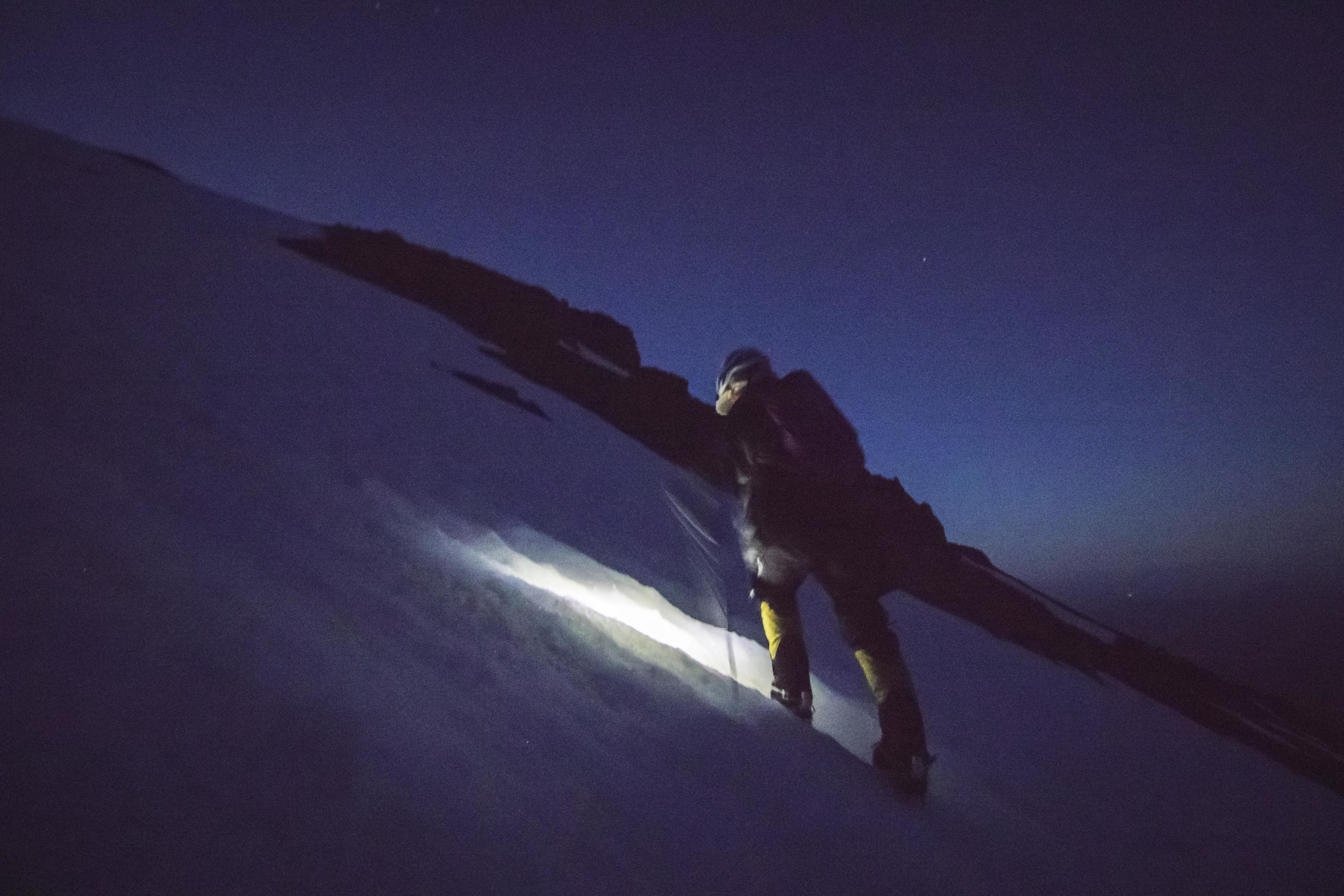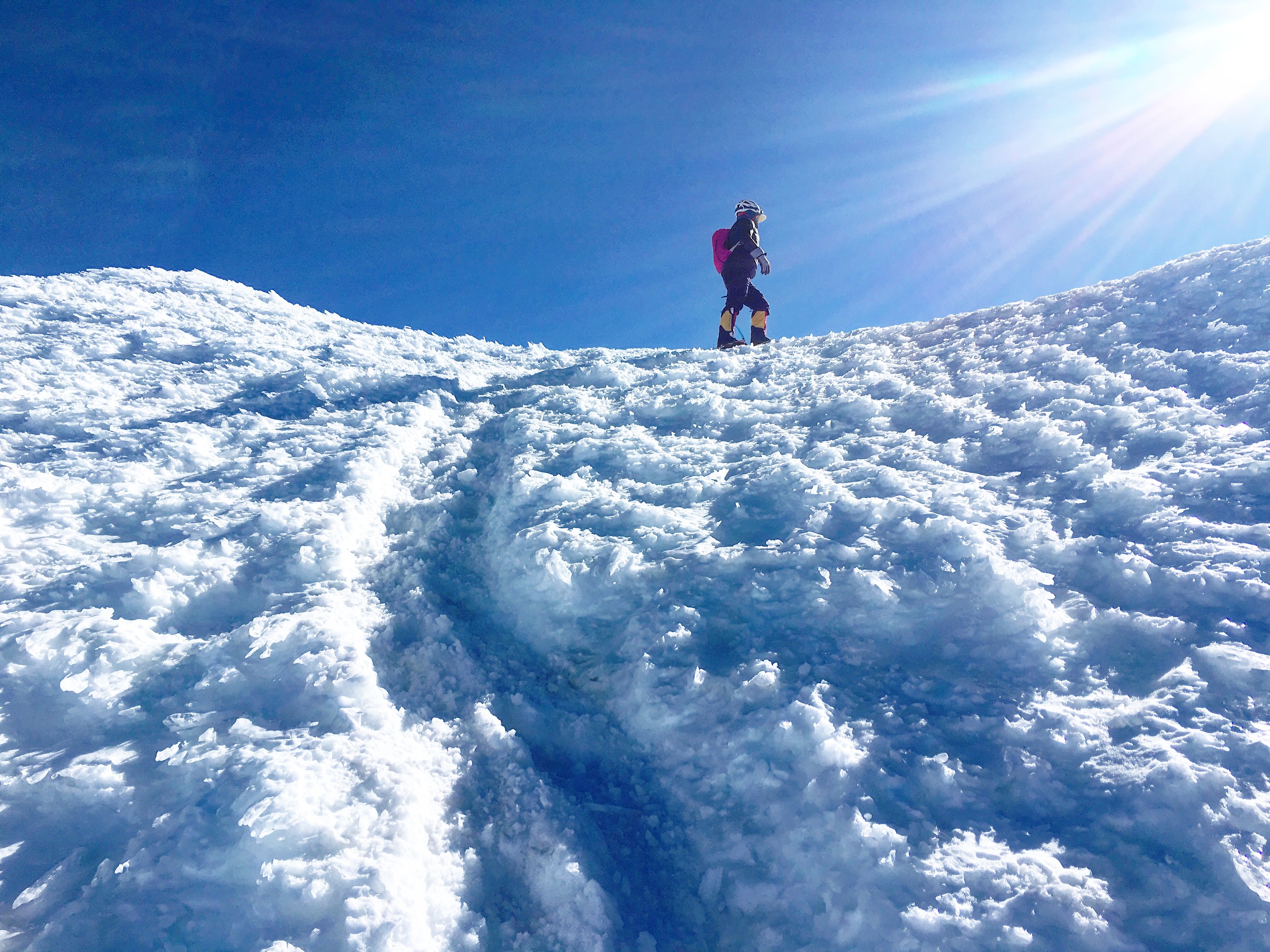Do you know that feeling of having a really wild and somewhat crazy dumb idea… and then going through with it? That seems to be how I run my life - literally. It’s how I came up with the idea of going for a speed record on Aconcagua last year (coincidentally also an idea that I hatched while adventuring in Nepal). And it is how I came up with the idea of running the Annapurna Circuit - a ~220 kilometer high-altitude trek that’s commonly done in seventeen to twenty-five days. I had the Annapurna Circuit idea one random November weekend in lakeside Pokhara, mostly because I was starting to go stir crazy and knew I was looking at another two weeks of free time before leaving Nepal. Sure, I could have gone paragliding or rafting or signed up for a yoga retreat or any number of things… but trail running is what I do, and I’d never yet been to the Annapurna region, and I felt like I should be training for other high altitude projects anyway - so my natural thought process was: what’s the longest, toughest, baddest journey run that I can come up with without having to do much scouting or complicated logistics planning? Ah, yes, the Annapurna Circuit.
There. Crazy, dumb idea. Let’s go run the Annapurna Circuit - after two and a half months of not running at all because of a sprained ankle, and right on the heels of a nasty infected blister on my left big toe that had me pathetically limping in flip flops for almost a full week (thank you, Mera Peak expedition, for that particular souvenir). But hey: running the circuit is going to be fun, right?? And what’s the women’s fastest known time on it anyway? Ah, 4 days and 14 hours. Mmmmh. For how many miles again?
Next step: a WhatsApp message to my boyfriend Paul at home in Colorado. “Hey love, I’m thinking I might try to run this big trail around Annapurna and see if I can’t set a new speed record on it. Talk me out of it…?” - Paul’s response: “Cool. That’ll be great training for your upcoming Argentina trip. Have fun, and CRUSH IT!!” Well, okay then. I guess I’m going for it now.
This was Monday mid-morning. The very next evening I am agonizing over whether or not to pack my big Mountain Hardwear Absolute Zero jacket for the route’s high point Thorong La - a pass which rises to almost 18,000ft in height and is going to be COLD. Wanting to minimize volume and weight I decide against the jacket. The sleeping bag stays behind, too.
Before I have a chance to reconsider it’s 5:30am on Wednesday morning; just a little over 48hrs since the Annapurna Circuit run idea first crossed my mind. I am on my way to the bus station in Pokhara where I can catch an early-morning ride to Besisahar, the official starting point for the full Annapurna Circuit. At this point I am still telling myself I might use the next several days simply to scout the trails in a fastpack mission, to then decide if I want to return and give the women’s FKT a proper go the following week.
But of course that’s not how it plays out. I arrive in Besisahar shortly before noon; the gateway town looks about as uninspiring and dirty as I was expecting, and I just want to get moving - so that’s what I do. I start running at noon in the heat of day. The jeep track is hot and dusty; I find myself dodging speedy motorcycles and sputtering local buses.
Darkness catches me five hours later. I am now twenty-five kilometers into the ~220 kilometer circuit. Running through the night is one of my least favorite things: not only is it cold and lonely and much harder route-finding than during the day, but the mental energy it takes me to keep pushing when I know that I have hours and hours of darkness ahead is monumental; the nights here are long. I also know that I need to manage my reserves: I am looking at three to five days of big mileage in a row, and I have no experience with multi-day efforts of this caliber. I don’t want to flame out going too hard, too fast.
I arrive in Jagat as it is getting too dark to see without a headlamp; a tea house owner beckons me, wanting to sell me a room, and I gladly take him up on his proposal. 100 Rupees (the equivalent of $1) for a bed to catch a few hours of sleep seems like just the thing right now - and since I am not carrying food I have to stop for dinner anyway. Five minutes later my already-tired feet are happily propped up on a chair; I am warming my hands on a cup of strong black tea.
Sleep strategy is one of the biggest levers I have for going after the speed record: Patricia Franco, who set the original women’s record of 4 days 14 hours and 45 minutes, rested and slept for a full twelve hours each of the first three nights on course. I am considering a half-night approach; hitting the trail in the middle of the night will not be fun, but it should allow me to bank miles and time towards the record.
My alarm rings at 11:10pm. I rub my contact-crusted eyes and grudgingly sit up in bed. Twenty minutes later I am ready to get back on the trail. Shoes laced, headlamp clicked on, fence hopped - it is customary in Nepal to lock the gates at night - and a few short steps take me to a world where I am utterly alone and surrounded by darkness. Over the constant roar of the nearby river I can hear dogs barking in the distance. The night is pitch black, yet I can sense the presence of enormous mountain ridges towering above me. The snowy summit of Annapurna is still some 30-odd miles away but as I’m traversing the cold, deep cut canyons of its surrounding valleys the massif looms large in my imagination. I try to focus my thoughts in the narrow beam of my headlamp, and remind myself of the secret to long distance endeavors: it’s all just about putting one foot in front of the other. Relentless forward motion.
And that’s exactly what the next seventy plus hours come down to: relentless forward motion. I run, I power hike, I bonk, I crawl until I can run again. I am diligent about picking up snacks along the way, making quick pit stops in many villages along the way. I maximize daylight to avoid the psychological toll of moving through the dark all by myself. Every few hours I take off my shoes and take care of my toe, which is still raw from that nasty blister infection which had just barely begun to heal when I set off on the circuit.
Forty long hours after starting the trail I have made it to eleven thousand feet and the start of the long, hard climb up Thorong La Pass. Thorong La tops out at 17,700ft; it is the very same pass where 43 people died in a snowstorm in 2014. To give myself the best chances of a successful crossing I stopped in Manang last night, to wait out the night and fuel up with a proper dinner and a few hours of sleep in the last big village below the pass. But now it is 5am and go time. I lace up my shoes, shoulder my Mountain Hardwear running pack, and open the door into the dark pre-dawn morning to find an unwelcome surprise: it is snowing.
Snow. This is not good. I am wearing running shoes rather than mountain boots. Thin liner gloves with big holes at the tips of several fingers. And I only brought the lightest one of the three puffy jackets that I typically layer atop one another once I get above 16,000ft. I need good weather to safely cross this pass.
I tentatively step into the night. There is half an inch of fresh accumulation on the ground and the snow is continuing to come down. I know that Thorong La’s highpoint is more than ten miles out from where I am, and there are a few more teahouse settlements along the way. I am worried about the conditions but I know what I have to do: put one foot in front of the other, stay alert, wait for daylight to arrive, and not make excuses for myself to give up before I have even tried. I have no desire to climb Thorong La in the snow but that is a decision to be made once I reach the last cluster of teahouses right below the pass, sometime later this morning. Onwards and upwards.
As so often, dawn saves the day. At daybreak the snow is starting to let up; I can see in the distance that the clouds are clearing on Thorong La pass. A deep-seated feeling of relief powers me up the next steep section, and then some. At this point I am quite confident that I can break the record, as long as my body just doesn’t break from the unaccustomed stress of a multi-day ultra push.
And so I push on. Relentless forward motion, one foot in front of the other. Thorong La comes and goes. I bomb down the backside of the pass, losing almost nine thousand feet of elevation in just a couple of hours. Muktinath appears in front of me. I stop to register my trekking permit at the official checkpoint. The officer asks where I am coming from; when I say that I started my day in Manang he nods and says “Ah, yes, helicopter.” Too tired and indifferent to explain, I push on. I’ve been on trail for 53 hours.
Night catches up to me once more. I welcome the darkness as an excuse to stop in Kagbeni for a warm meal and a bed. From here, my map is telling me, it’s another 80 kilometers and all downhill.
Miraculously my body seems to be getting stronger through this ordeal, not weaker as I had feared. The ankle I sprained three months ago is stable and strong. My badly blistered and infected big toe, which had almost sent me running to the emergency room in Pokhara a few days ago, seems to be healing more and more with every mile I put on it. My lungs, which are known to occasionally succumb to intense-exercise-induced asthma, are humoring me through dust and cold air and altitude. My blood oxygen clocks in at 99% after crossing Thorong La Pass, even though it’s been almost ten days since I was last up high.
At this point my internal dialogue changes. It’s no longer about breaking the existing women’s record: I am starting to believe that I can do that. But can I get to the finish line in Nayapul before noon on Sunday, to complete the whole circuit in less than four days? If I’m just willing to endure another midnight start on my last day I might just be able to pull it off. The only thing that is fueling me now is my own ambition and curiosity to see what I can do.
Another midnight start. Another big day. Another big climb of more than 6,000ft to get across Poon Hill, Nepal’s most loved-to-death introductory trek. And then the equally steep and long descent on the other side which finally gets my body to start complaining: my right shin seems to want to explode. At least I should only have some fifteen kilometers of downhill left to the finish line! Only of course the map is grossly inaccurate for this section. What shows as a two kilometer stretch between villages turns out to be ten, and what should have been a casual stroll towards Nayapul turns into a chase for my self-imposed Sunday noon deadline. Once I am down the steepest sections of the trail I pick up the pace and force my exhausted feet to start running again - because what’s that old ultra running saying? Pain is temporary, glory is forever.
And just like that, a mix of stubbornness and relentless forward motion and inspiration from the runners who came before me carries me to Nayapul, across the bridge that marks the official finish line, at 11:39am on Sunday morning. After 219 kilometers and more than thirty-three thousand feet of climbing, just twenty-one minutes shy of four full days on the trails that circumnavigate Annapurna, I don’t care anymore that I am confusing a few random bystanders with my level of elation and the size of the grin on my face. Because the only thing that I care about right then and there is this: I finally get to stop moving.
Note: when I decided to run the Annapurna Circuit I had just spent weeks leading a team to the summit of 21,247ft Mera Peak which provided the necessary acclimatization for me to attempt this on a whim. Do not try to tackle a high altitude run without allowing time for acclimatization first.
You can find GPS tracks and a few video snippets using the links below.
Suunto move
Suunto Ambit animated track
Video journal from the top of Thorong La Pass
DeLorme GPS track (if the page doesn't load auto-centered on the Circuit...
zoom out and manually navigate over to Nepal)































































